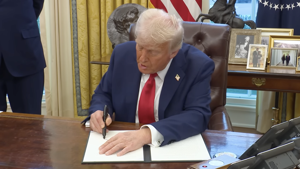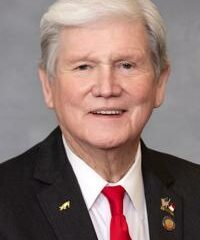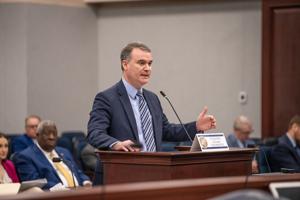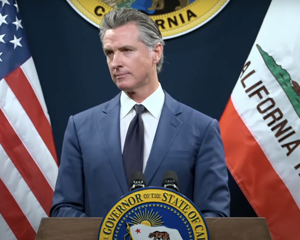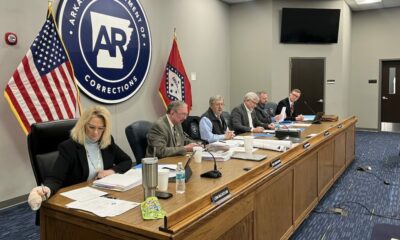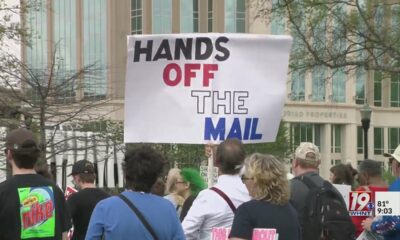(The Center Square) – The Trump administration is continuing to reverse Biden administration energy policies, including its moratorium on new oil and natural gas lease sales on federal land and offshore waters.
In response to President Donald Trump’s executive order, “Unleashing American Energy,” Interior Secretary Doug Burgum issued an order to reduce regulatory burdens and expedite domestic energy development, impacting 3.5 million acres in seven western states.
In Trump’s first month in office, the Interior Department’s Bureau of Land Management began leasing federal land in five western states. In January, it leased 13 parcels covering 1,324 acres in Montana and North Dakota for $11,314,786. In February, it leased seven parcels totaling 1,317.29 acres in New Mexico for $20,671,801. In March, it leased 4 parcels totaling 2,443.11acres in Wyoming for $6,725,713 and in Nevada 10 parcels totaling 19,954 acres for $295,309.
Total lease sales in three months totaled more than $39 million, reflecting “an ongoing focus on unleashing domestic energy production, supporting job growth, and reducing reliance on foreign resources through efficient, streamlined permitting and leasing processes,” the BLM said.
“Unlike under President Biden, we will not leave our critical energy resources locked up when so many Americans are suffering through the unnecessarily high cost of living imposed by the previous administration,” Burgum said. “Unleashing America’s energy resources will lower prices at the pump, at the grocery store and across all aspects of American life while strengthening our national security.”
On Thursday, the Interior Department announced it would no longer require the BLM to prepare an environmental impact statement for 3,244 oil and natural gas leases in seven Western states in compliance with Trump’s executive order.
Nearly every day, it’s also announcing new leasing opportunities.
One includes scheduling an oil and gas lease sale on June 3 to offer 13 oil and gas parcels totaling 20,888 acres in Utah.
Another includes requesting public input for an upcoming lease sale of 99 oil and gas parcels totaling 84,045.23 acres in Wyoming and for 29 oil and gas parcels, totaling 9,102 acres, in a September sale in Montana and North Dakota.
“Leasing is the first step in the process to develop federal oil and gas resources,” the department explains. “Before development operations can begin, an operator must submit an application for permit to drill detailing development plans. The BLM reviews applications for permits to drill, posts them for public review, conducts an environmental analysis and coordinates with state partners and stakeholders.”
Oil and natural gas leases are awarded for a renewable 10-year term. The federal government receives a royalty of 16.67% of the value of production.
The Interior Department also approved a new natural gas pipeline in Humboldt County, Nevada, authorizing construction and maintenance of a 16-mile, 24-inch buried pipeline and associated above ground facilities that will cross public and private lands.
Burgum also directed the Bureau of Ocean Energy Management to hold offshore lease sales in the Gulf of America. The first proposed notice of sale is slated for June.
According to BOEM’s latest analysis, oil and natural gas resources in undiscovered fields in the Gulf of America include 29.59 billion barrels of oil and 54.84 trillion cubic feet of natural gas.
“By continuing to expand offshore capabilities, the United States ensures affordable energy for consumers, strengthens domestic industry and reinforces its role as an energy superpower,” the Interior Department argues. “Opening the Outer Continental Shelf is central to this strategy as it unleashes domestic energy potential that had been blocked under the previous administration,” and is expected to generate tens of thousands of high-paying jobs throughout the industry.
Outer Continental Shelf oil and gas activities have generated billions of dollars in revenue from lease sales, rental fees and royalties to the federal government and states, helping to fund infrastructure, education and public services and wildlife conservation. They also help strengthen U.S. energy independence, national security and global stability, by reducing reliance on foreign producers, the Trump administration argues.
Offshore production in the Gulf of America accounts for the third greatest volume in the country, of nearly 1.8 million barrels of oil per day, according to Energy Information Agency data from January. The greatest volume is produced in the Permian Basin in west Texas, which leads the U.S. in oil and natural gas production, The Center Square reported.









